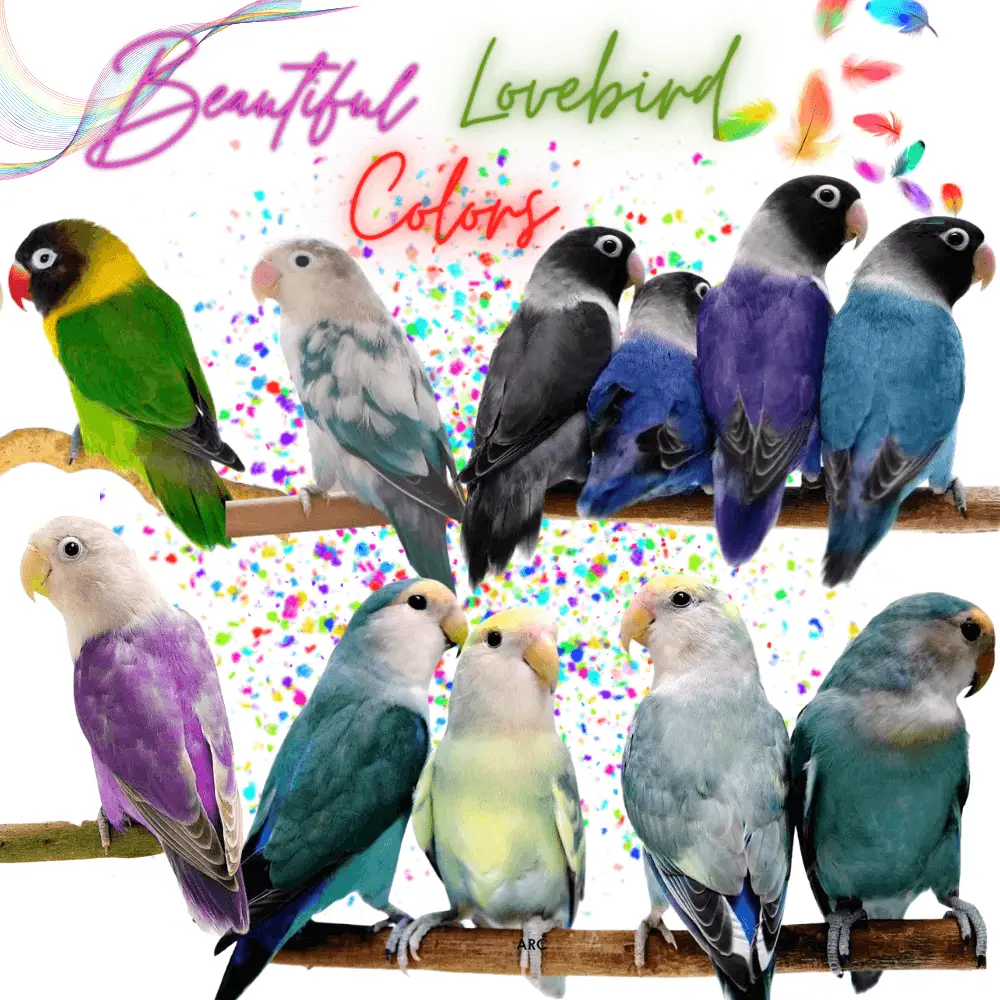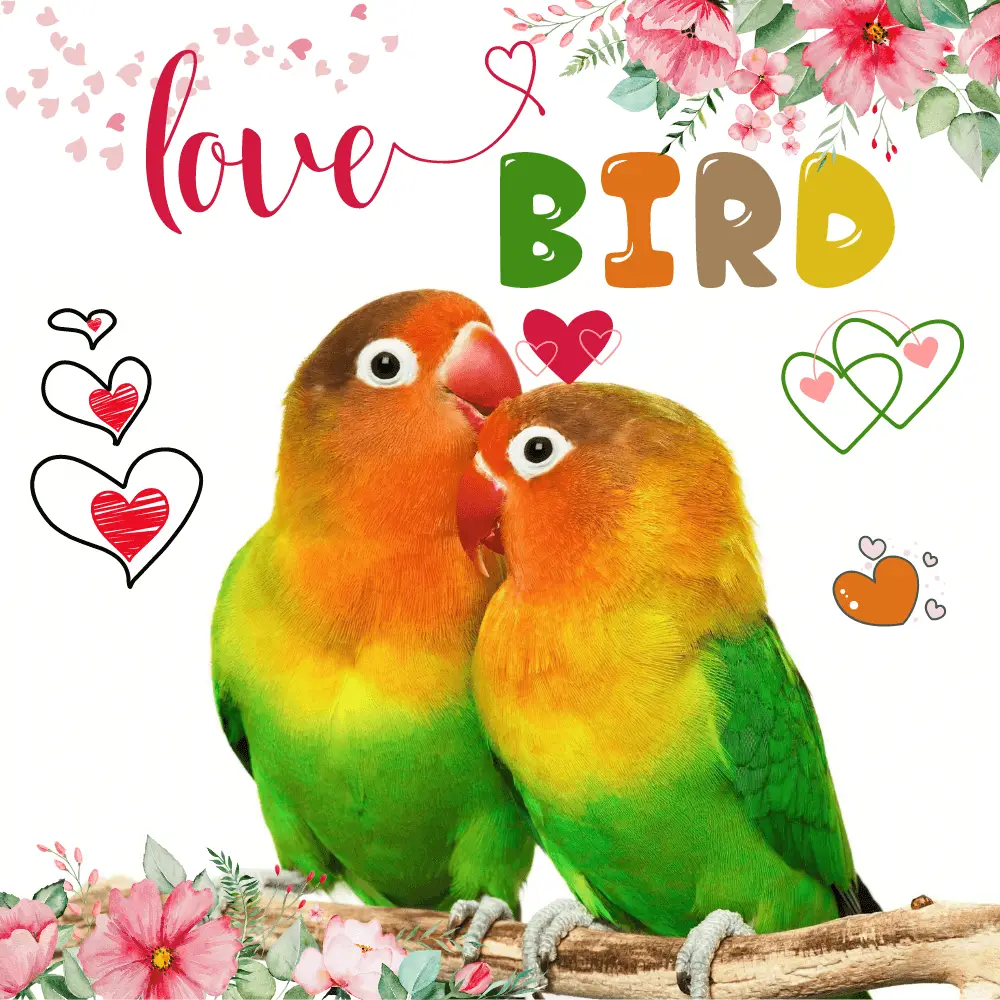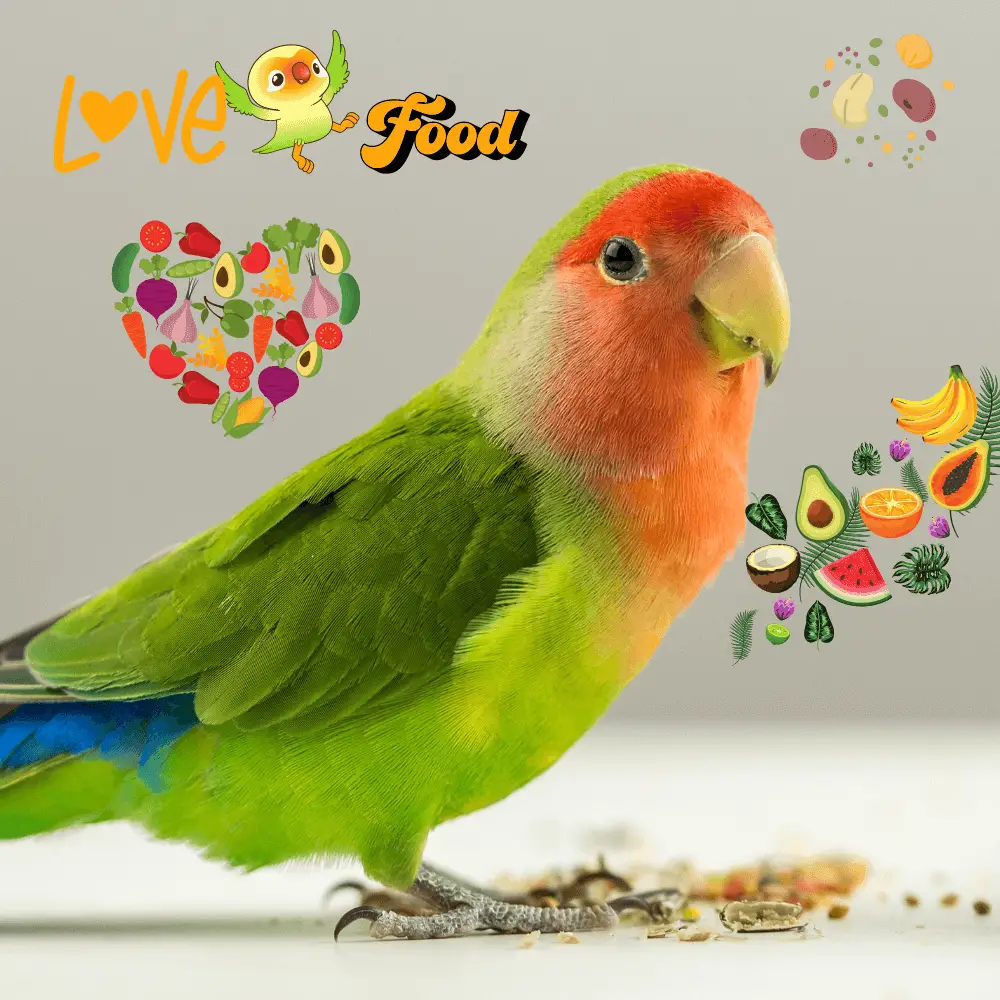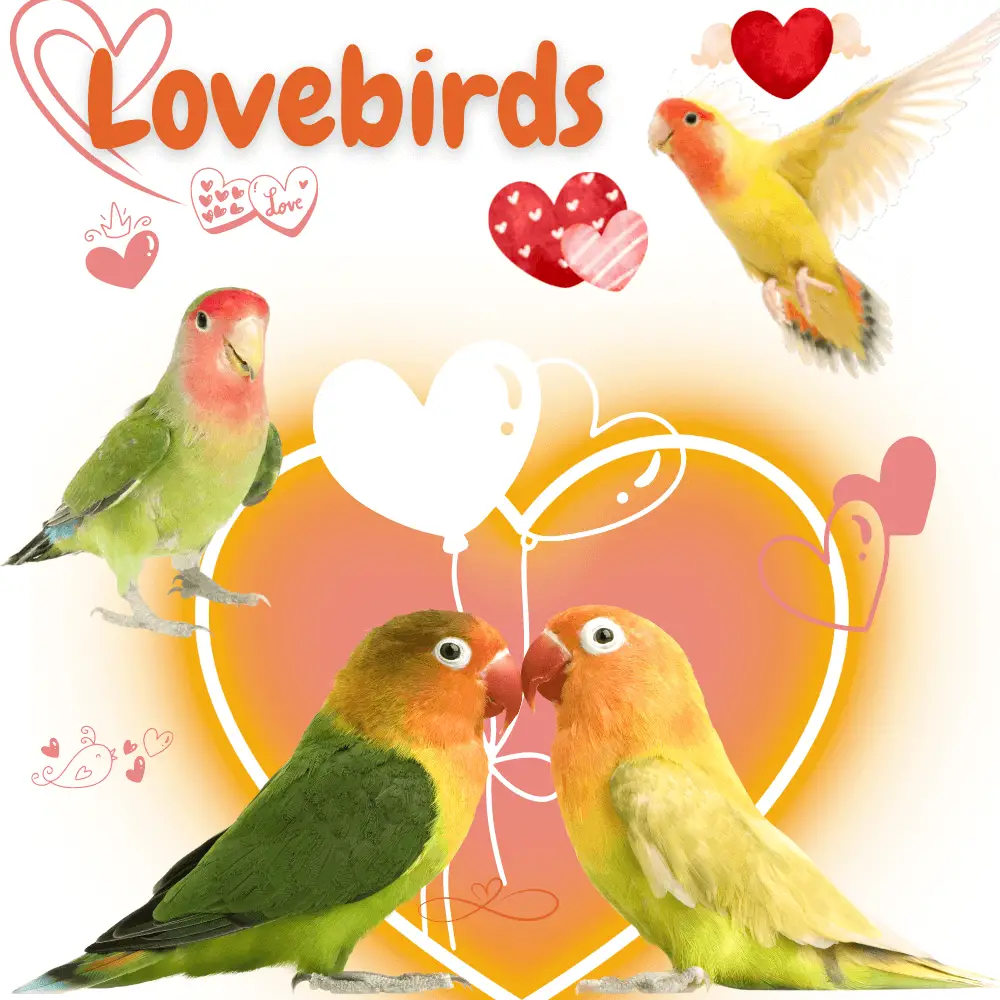Lovebirds: With their bright colors and their resplendent plumage, the lovebirds make more than one crack. As their name clearly suggests, these birds, which are particularly easy to raise and educate, like to live in pairs. They are also docile, jovial, very affectionate, and, unlike other birds, they appreciate petting.
Be careful, these parrots are also very clever and learn very quickly: they will come out of their cage at the slightest inattention on your part. Who are the Lovebird? What is their character? How to raise them and take care of them at home? The answer is below!
Lovebirds as pets
Lovebirds are small parrots belonging to the Psittacidae family, which live wild in southern Africa and Madagascar. Very popular, these little birds are as much appreciated for their docile and mischievous character as for their very colorful plumage. Not to mention the fact that they are affectionate and particularly easy to educate and raise. Lovebirds take their name from their characteristic lifestyle: they always live in pairs.
Rosy-faced, Fischer, masked, black-cheeked, Abyssinian, grey-headed…there are several types of lovebirds. They have in common their brightly colored plumage, their powerful beak, and their beautiful rounded tail… but also the fact that they are very endearing! In adulthood, lovebirds weigh 30 to 50 g for a size of 13 to 15 cm.
Remember that the character trait that distinguishes lovebirds (and to which they owe their name) is their tendency to live together. In fact, they can only live and thrive as a couple. This is why it is recommended to adopt them in pairs, at the risk of seeing the bird alone let itself wither.
Love birds male or female

It is very difficult to recognize a male lovebird from a female. The reason for this is that these parrots have no external organs that can differentiate between the two sexes. So how do you tell a male lovebird from a female?
This can be achieved by measuring the gap in their pelvic bones, knowing that it is less important in the male than in the female. However, this method is not very reliable because everything depends on the species of lovebird. To be sure, the only way is to do a DNA test at the veterinarian.
Lovebird colors
SOURCE: African Grey Parrot Pet
Docile while being mischievous, lovebirds have a very particular character, specific to their species. These small birds are naturally gregarious, so they can be very sociable, as long as you interact with them during their growth. Remember that lovebirds are parrots. As such, there is a risk that they will become possessive and become attached to one person. To counter this, make sure they are bred and trained by more than one person.
Agile, dynamic, and very lively, lovebirds like to interact with their environment in different ways: climbing along the cage, flapping, walking on the ground to look for food… They also tend to stand on one leg, a sign ultimately that they feel comfortable and safe.
They can also sleep in this same position, without it bothering them. When they wake up, lovebirds groom themselves for several hours a day. Along with games, toileting is their favorite pastime. They thus rid their plumage of dust, and at the same time coat it with a greasy protective substance. It also happens that the couple grooms each other as a sign of attachment.
Be careful not to forget your finger near the beak of a lovebird, especially females. These do indeed tend to bite, but not without alerting you beforehand. So learn to recognize the signs of a sudden bite. In the end, even though they are parrots, lovebirds do not have the ability to speak. They can, however, reproduce the sounds of certain objects in their environment. More rarely, they may happen to say simple words.
Lovebird adoption

We told you, lovebirds are particularly lively birds. We must therefore give them the space to spend themselves as they like to do. So opt for a large cage: for a couple, count at least 50 cm in height and a floor area of 60 x 40 cm. Ideally, choose a cage with legs. When this is not possible, be sure to place it in a high place, in a place sheltered from drafts.
The cage must also be equipped with perches wide enough for the birds to cling to comfortably in pairs. It must also contain water and food bowls, in addition to a few branches so that the lovebirds can have fun and sharpen their powerful little beaks.
Preferably equip the cage with games such as swings. To facilitate the maintenance of the cage, do not hesitate to place the absorbent paper on the ground. Finally, to prevent runaways, don’t forget to securely lock the cage. You are told that lovebirds are very clever, to the point that they can very quickly learn to open the door.
Lovebird breeding
Lovebird food

Seeds, fruits, vegetables, rice, pasta… the diet of lovebirds must be varied to avoid obesity due to a diet based solely on seeds, but also to compensate for vitamin and calcium deficiencies. In addition to fresh fruits and vegetables essential to their well-being (pears, apples, bananas, red fruits…), serve them quality seed mixes, widely available on the market. This will be the essential part of the diet of these small seed-eating birds that are lovebirds.
More rarely, feed them citrus fruits and green apples, but only in very small quantities because they are more acidic. And whatever fruit you give them, don’t forget to wash it well and serve it to them fresh, to eat during the day. At night, remove leftover fruits and vegetables so the birds won’t eat them the next day.
In addition, during the moulting period, it is advisable to give your lovebirds a food supplement (vitamins and minerals): egg pâté, sprouted seeds, green foods… Don’t forget the water! That of the tap will do the trick, but it will have to be renewed every day.
Lovebird health
Lovebirds are naturally hardy and resilient, but they can be subject to stress and, more rarely, other illnesses. Indeed, some birds of the species can be exposed to dermatitis, or to a disease of the beak. Usually, they recover fairly quickly, but you should still see a NAC veterinarian for treatment and advice. When they are well cared for and they evolve in an environment adapted to their needs,
Lovebirds lifespan
Lovebirds have a life expectancy of 10 to 15 years.
Lovebirds price
Price of lovebirds Between 80 and 100 dollars for a couple (up to 300 depending on the transfer).

